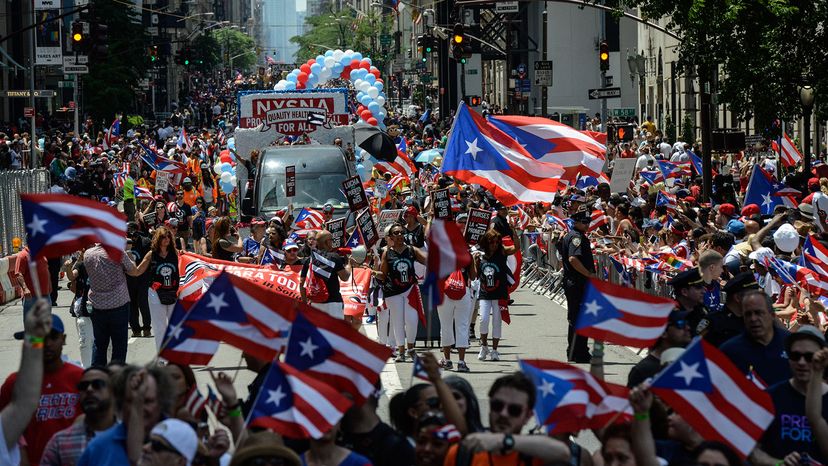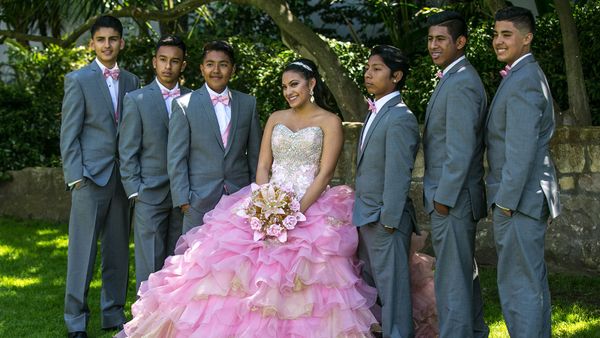
It's National Hispanic Heritage Month in the United States (September 15 through October 15), a time for Americans to celebrate the richness of Hispanic and Latino culture at home and abroad through art exhibits, food festivals, Spanish-language film and theater productions, and more.
It's also a time for politicians and the media to stumble over the subtle differences between the terms Hispanic and Latino. The confusion is real, because the dictionary definitions of Hispanic and Latino don't always jibe with the way the terms are understood and used in the real world.
Advertisement
Let's start with the main difference between the official definitions of Hispanic and Latino. The term Hispanic covers anyone from a Spanish-speaking country or their descendants. So you're considered Hispanic if you or your ancestors are from one of more than 20 Spanish-speaking countries around the world. That list includes countries in Latin America (which consists of South and Central America, plus Spanish-speaking islands in the Caribbean) and Spain.
Latino, on the other hand, refers specifically to people from Latin America. Confusingly, this includes people from non-Spanish-speaking countries. So someone from Brazil (where Portuguese is the main language) or Suriname (where they speak Dutch) is considered Latino, but not Hispanic, because they don't speak Spanish.
To sum up:
- Somebody from Spain is Hispanic, but not Latino.
- Somebody from Brazil is Latino, but not Hispanic.
- Somebody from Mexico is both Hispanic and Latino.
But before you get too comfortable with those definitions, you need to understand how each of those terms is loaded with its own history and politics. The U.S. census officially began using the word "Hispanic" in 1980 as an umbrella term for Americans with origins in Spanish-speaking countries. But not everybody was comfortable with that term.
Rolando Romero was chair of the Department of Latina/Latino Studies at the University of Illinois at Urbana-Champaign when we spoke to him in 2018 (he is now associate professor emeritus). Romero was born in Mexico and emigrated to the U.S. at 13 years old. For him and many others, the word "Hispanic" is too tied to Spain and doesn't reflect the lived experience of Latino communities in America, most of which have ties to Latin America.
Romero prefers "Latino," but believes it should only be used to describe Latinos in the U.S., not people living in Latin American countries. And even then, he thinks that Latino falls short of describing most Latinos' self-identity.
He says that if you ask a Latino person about their background, most won't say, "I'm Latino." They'll say "I'm Mexican-American. I'm Puerto Rican. I'm Cuban." When describing himself, Romero uses "Chicano," a term for Mexican-Americans that arose during the Civil Rights movement and still carries a note of pride and political defiance.
"If you go to the Rogers Park neighborhood in Chicago, you'll see Cuban food, you'll see Colombian food, you'll see Salvadoran food," says Romero, "but you'll never see 'Latino food.' Latino has become the umbrella term in the U.S. to refer to all those groups, but it's hardly ever used in real life."
Romero's impression is backed by 2019 survey data from the Pew Research Center, which found that 47 percent of all Hispanics and Latinos would describe themselves using an "origin term" like Mexican or Dominican, while 39 percent used an umbrella term like "Hispanic" or "Latino."
More recently, the term Latinx has been tossed into the mix. It was born of the LGBTQ movement and a desire among some Latinos to create a more inclusive term outside of the gender binary Latino or Latina. Romero worries that it's impossible to rid the Spanish language of gendered words and that Latinx is confusing to native Spanish speakers.
But María R. Scharrón-del Río, a counseling professor at Brooklyn College, disagrees, seeing the new word as a way of reaching out to people who haven't always been embraced by Latino immigrant communities.
"By using Latinx, nobody is telling you how to identify. It's up to you if you want to be Latinx, Latino, or something else," she told NBC News. "It's really a way to be inclusive. For people who are traditionally marginalized, that millisecond of politeness and recognition towards someone who is gender queer, tells them that you see them, that you are an ally."
Advertisement


